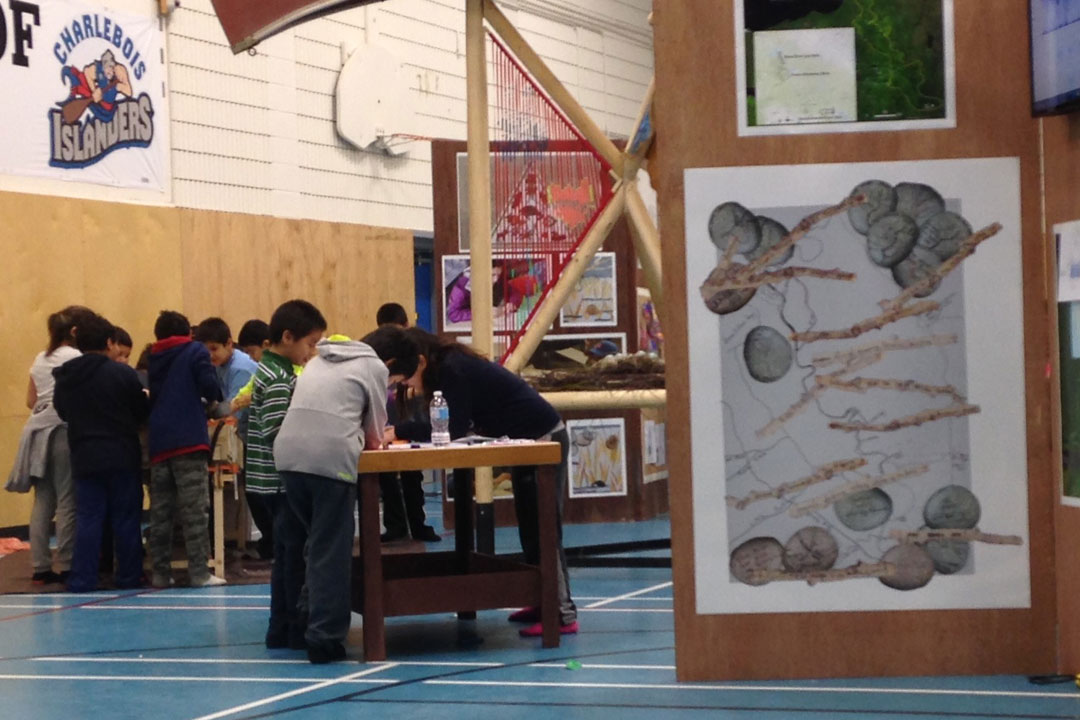
Delta Days brings water research home
The completion of the Delta Days travelling display has been only half of the journey.
By Chris MorinNow that the display is touring through several river delta communities, School of Environment and Sustainability (SENS) alumna Kiri Staples is excited at the prospect of community members revisiting the work that involved more than 100 participants from Western Canada.
The display, a multi-media art exhibit, is a part of the University of Saskatchewan-led Delta Dialogue Network, which brings together researchers, communities and decision-makers to understand and address water issues in three Canadian river deltas.
Aiming to spread ideas of delta health and restoration via artwork, photography and interactive displays, these messages were compiled during conversations that U of S researchers had with delta residents during Delta Days in 2016. Staples, a project manager for the Delta Dialogue Network since 2014, helped organize the event.
“Kiri has been the glue that has held the many moving parts of project together over the last three years,” said Toddi Steelman, executive director of SENS and principal investigator on the project, which was funded by the Social Sciences and Humanities Research Council. “She had a unique combination of experience and dedication that has made this project a success.”
Staples, who was born and raised in Whitehorse, co-ordinates the project over a large geographical area. She said she appreciated the experience and enthusiasm that SENS faculty brought to the northern research project.
“Being from the Yukon, this was very important to me, and to be able to continue with SENS as a project manager for the Delta Dialogue Network was an opportunity to continue pursuing that interest in new areas,” said Staples.
After finishing her Masters of Environment and Sustainability—examining the role of gender and decision-making on natural resource co-management boards in the Yukon—Staples worked alongside a number of other researchers in raising awareness of the issues facing delta communities. Residents from the Slave River Delta (N.W.T.), Peace Athabasca Delta (Alta.) and Saskatchewan River Delta (Sask./Man.) revealed how the change in flows has created conditions of despair. They said that the cycle can only be reversed by restoring the rhythm of these deltas, to bring hope for the next generation.
Construction of the Delta Days travelling display began last year and Staples only recently had the chance to see the exhibit as it neared its final stages of completion.
“It’s one thing to go from writing the grant applications to putting together the Delta Days event and meeting so many members of those communities,” said Staples, who is currently working on her PhD at the University of Waterloo. “It was so worth it. Just to see it all come together was amazing, and there was a lot of hard work that went into it.”
With plans to bring the display back to the U of S later this spring, Staples said that delta community members are invited to be part of this ongoing collaboration by visiting the display and adding recipes, photos, artwork or other items to it that show who the delta peoples, cultures and communities are.
Acknowledging the contributions from SENS, along with the art and drama departments at the U of S, Staples is excited to share what she calls an example of mobilizing knowledge in new ways.
“It’s a way of acknowledging the shared experiences of people living far away from one another and putting it on a larger scale, all the while acknowledging the differences between these places.”
Chris Morin is a communications specialist in the Global Institute for Water Security and the School of Environment and Sustainability.

